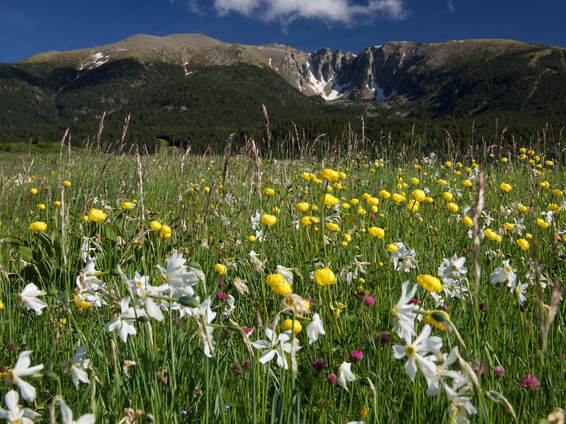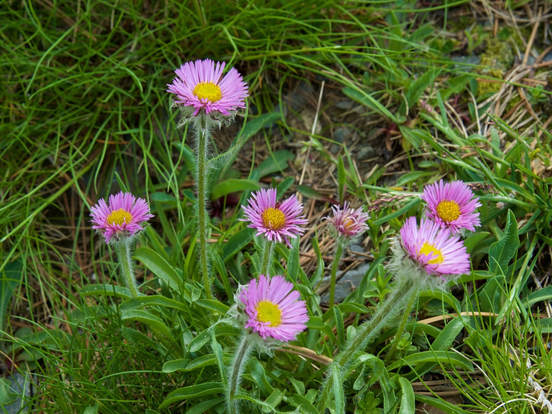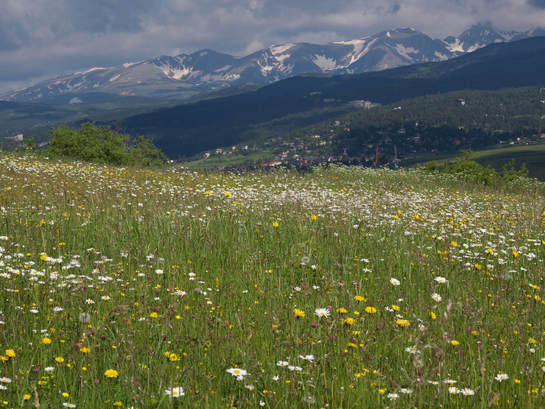Martine and I had travelled through the Cerdagne before, but never really stopped. It has always appeared as a very attractive area to us, so when our little group decided to spend a few days there, we were very happy, and it certainly did not disappoint.
The Cerdagne is a high, wide, open, undulating valley, backed by the big summits of the Pyrenees; these retained the perfect amount of snow when we arrived, so that ridges and peaks were outlined beautifully. From the point-of-view of landforms and, indeed, emotion, you enter the Cerdagne as you reach Mont Louis (although the administrative boundary is a little further west). We were staying for a few days in one of a group of Alpine-style chalets, outside a small village, close to the ramparts and turrets of the Vauban-fortified Mont Louis.
Shortly after we got there, we met up with Lesley, and as she was taking Dog Digby for a short walk, we went with her, but we actually did not get far before we were stuck, almost transfixed, you might say, photographing a meadow beside the track. The backdrop to the whole scene is a big, handsome mountain, endowed at some stage with the rather mysterious name of “Cambra d’Ase”; there are a few variations on this spelling. Although the name is clearly more Spanish or Catalan than French, the mountain, in its general appearance, (if you ignore the difference in height), could easily be Scottish. It is massive, relatively flat-topped, appearing like a big plateau-mountain, one of the Cairngorms, perhaps. And in the middle of the view we had, are the fine rocky buttresses and gullies of a big, glacial bowl or corrie, with bright patches of snow at the base of the crags.
If the background to our many pictures could have been Scottish, the foreground could not have been. It was, simply, a bit of meadow – awash with flowers, yellow and white, with patches of an almost-blue geranium. The yellow was provided in part by some hawkweeds and buttercups, but these were outnumbered by masses of the glorious globeflower, Trollius europaeus. (This is a flower known to me from a few richer places within the acid rocks of the Highlands, mostly now eaten to nothing by the hordes of red deer). The white, pure and lovely, was given by great numbers of a narcissus, just like a smaller version of the garden flower, which is sometimes called “pheasants’ eye”, Narcissus poeticus – and incredibly beautiful it was too. (It turned out that we were very lucky to see them; within a few days, they were completely over).
The whole effect was of the wonderful richness and glory of the natural world...


